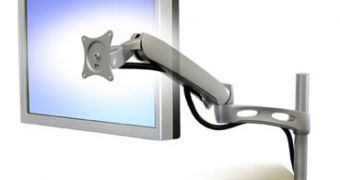As a consequence of the generally poor performance of the global IT industry compared to the situation in 2008, decline very well represented by the 2009 reported developments in the semiconductor market, various levels of the total worldwide hardware market were affected in ways that were not exactly favorable to hardware developers, manufacturers and suppliers. Such is the case in the area of LCD monitor displays, where weak demand compared to large inventories yielded unsatisfactory sales, even despite the price cuts that were made in the hope of increasing the monthly amount of shipments.
This situation arose at least in part as a result of the fact that notebooks and netbooks were the product lines, which saw the highest popularity during the past year, with the latter seeing an especially rapid popularity growth. This led to low amounts of LCD panel purchases, eventually causing monitor prices to drop below their actual manufacturing cost. Currently, LCD makers are trying to reduce their supply to the monitor market segment in order to prevent further losses. This means that there will be fewer cases of overstocked suppliers, leading to price increase for LCD monitors during December.
Price growth will not be monumental but, at least, prices will stabilize, giving a slightly higher sense of financial security to those suppliers that currently have more LCD monitors in stock than they have orders. The only market, which still shows a high demand for 16:10 19-inch and 22-inch LCD monitors is the Chinese segment, even despite the growing popularity of the 16:9 aspect ratio.
Retail channels have started to replenish their inventories, according to Digitimes, and vendors will focus more on notebook and netbook LCD screens in order to avoid being overstocked with desktop panels. If panel makers manage to somehow limit their overall production rate, panel prices will most likely not see any major fluctuations and will probably stabilize by January 2010.

 14 DAY TRIAL //
14 DAY TRIAL //